American Samoa Cultural Vignettes
2 Comments
https://www.terragalleria.com/blog/american-samoa-cultural-vignettes/
While this series has largely focused on natural experiences, the National Park of American Samoa was also established to preserve and celebrate Samoan culture. Its mission includes safeguarding cultural traditions and ensuring they remain vibrant and relevant. In that spirit, this piece showcases various aspects of Samoan culture through a collection of photos taken on Tuitula Island.
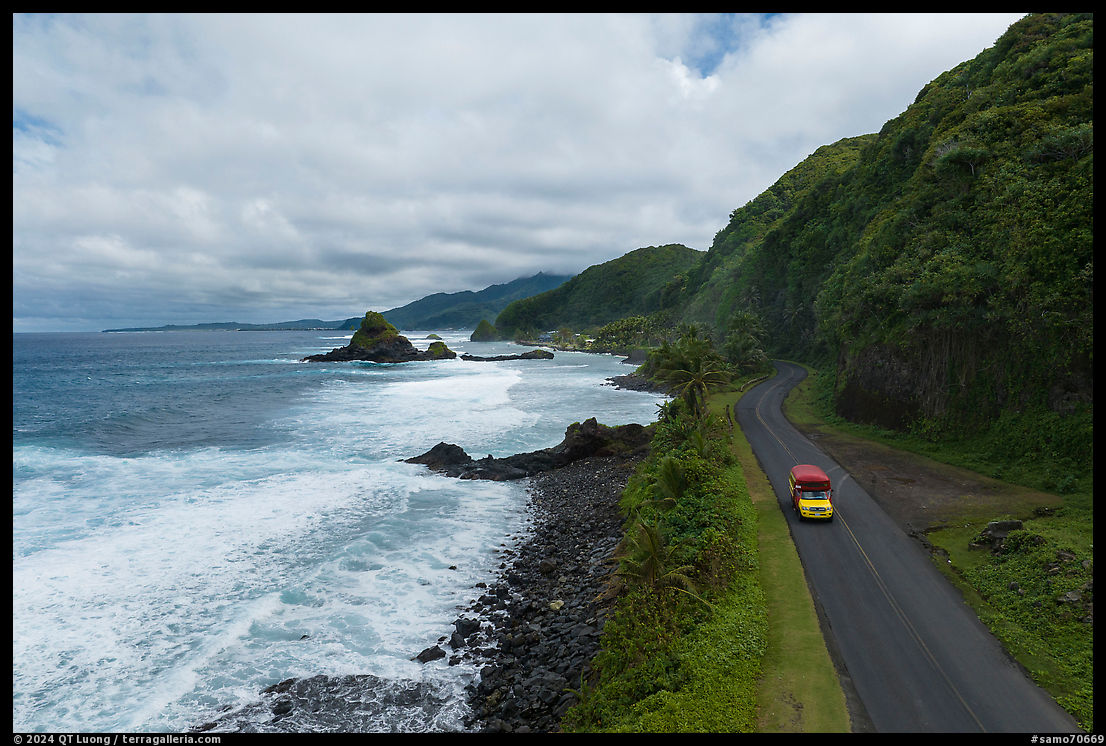
Aiga Busses
Aiga buses are a colorful and iconic mode of transportation in American Samoa. These vibrant, locally-owned buses are converted trucks, often adorned with bright paint, island motifs, and lively decorations. The buses operate on flexible schedules, picking up and dropping off passengers anywhere along their routes, making them a convenient and accessible option for locals and visitors alike. Fares are low, and the atmosphere is friendly and communal, reflecting the Samoan spirit of aiga, or family. Adding to the lively experience is the bus’s sound system, often blasting cheerful island music, creating a festive atmosphere.
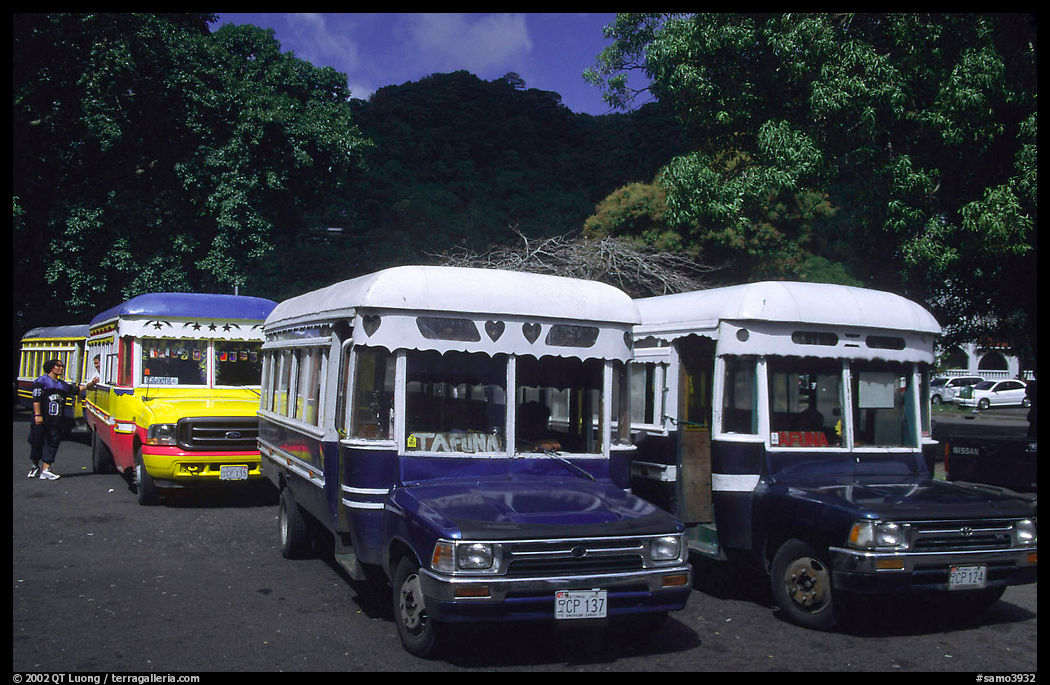
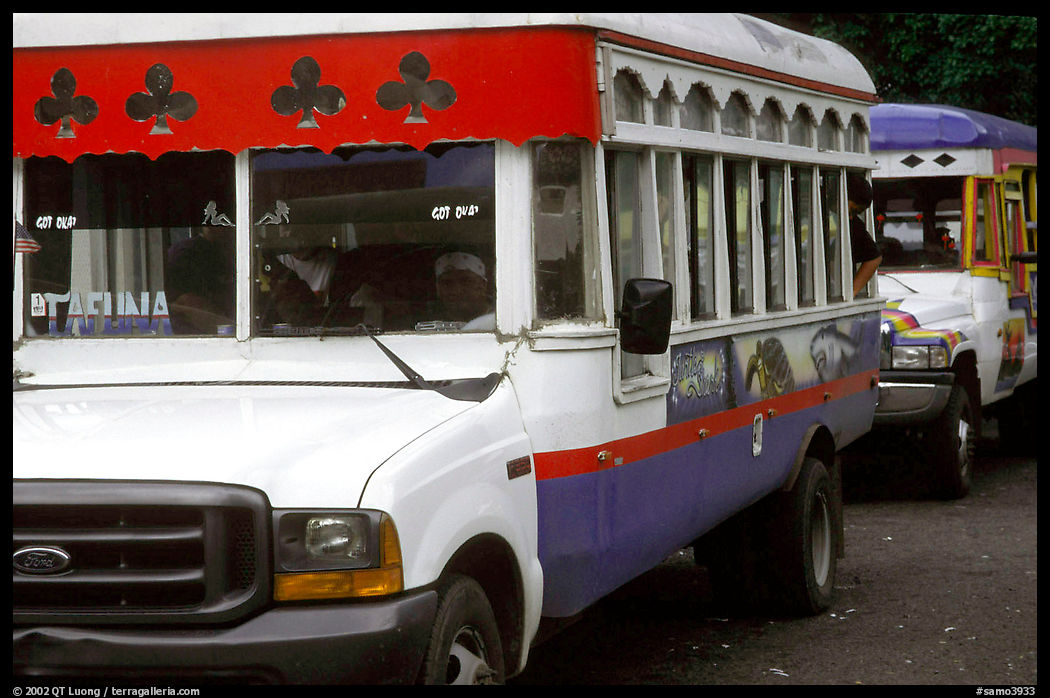
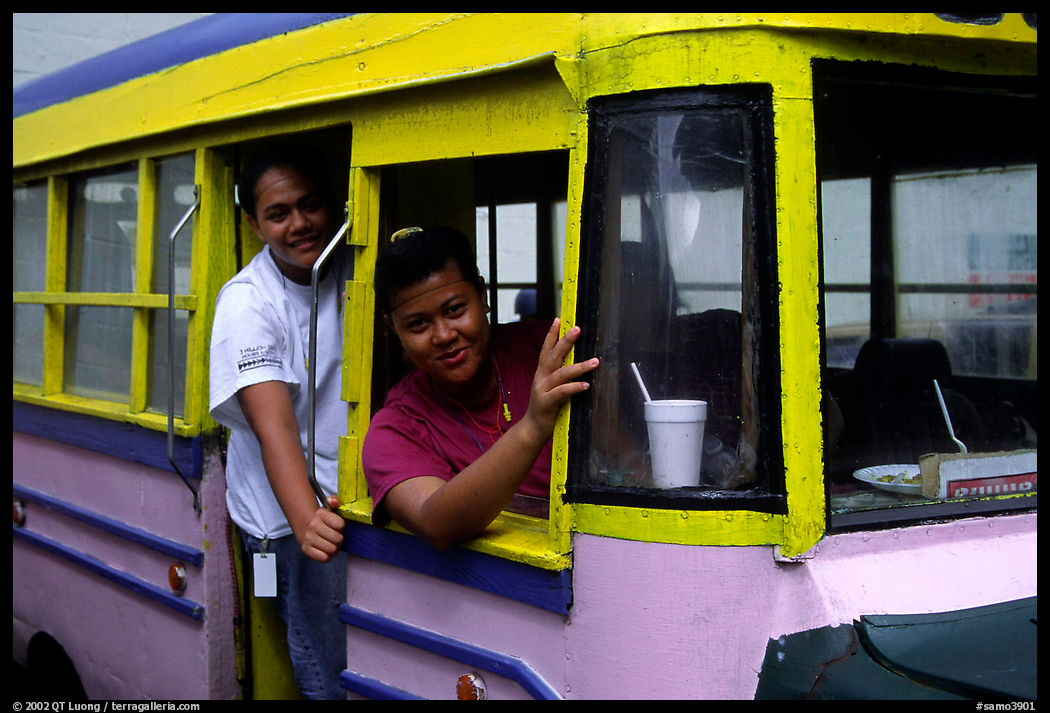
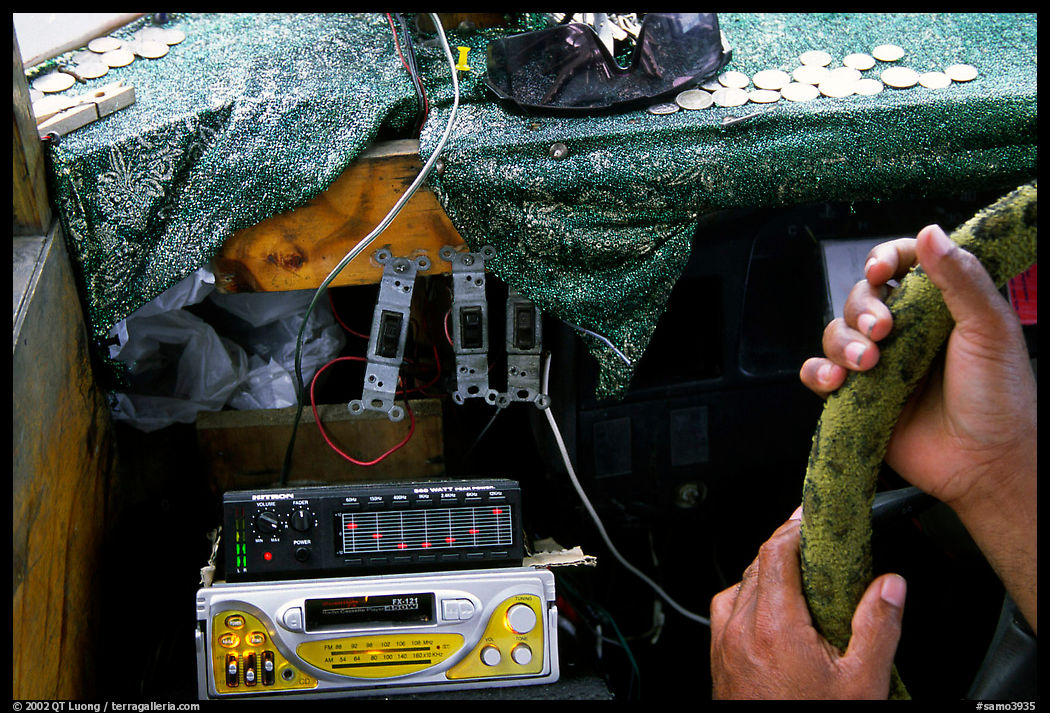
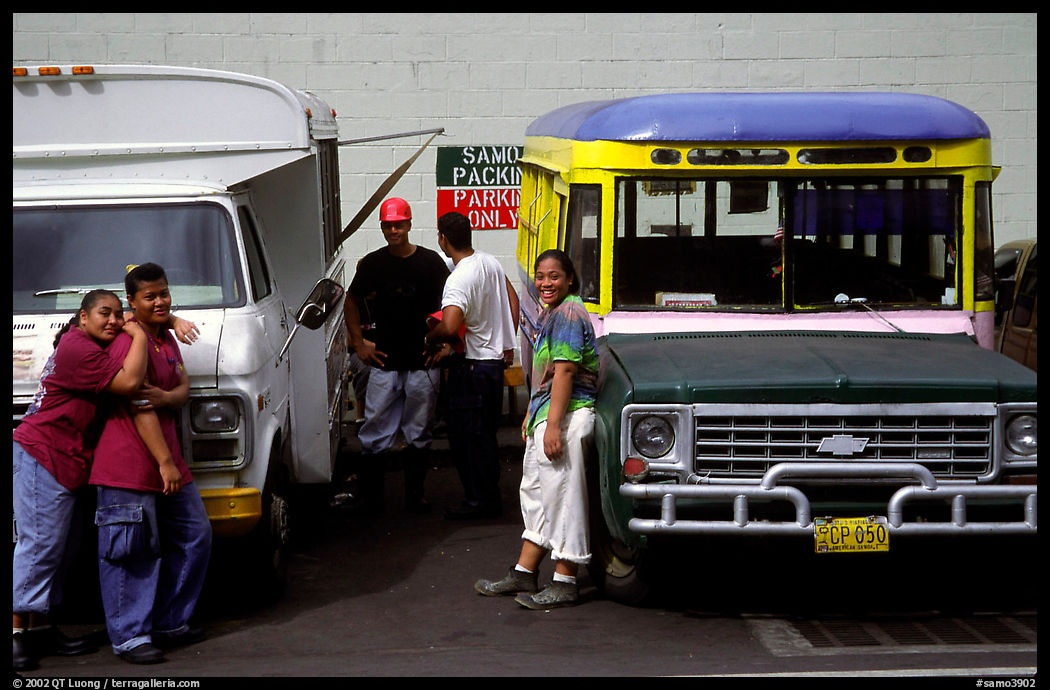
Samoans
In American Samoa, locals are remarkably warm and friendly. As I also experienced in Vietnam, young people often invite visitors to take their pictures. This welcoming attitude contrasts sharply with the negative reactions sometimes encountered in Western countries, where parents often strongly object to their children being photographed. While those Samoans see photography as a way to connect and share their vibrant community, in mainland America, caution and suspicion often prevail.
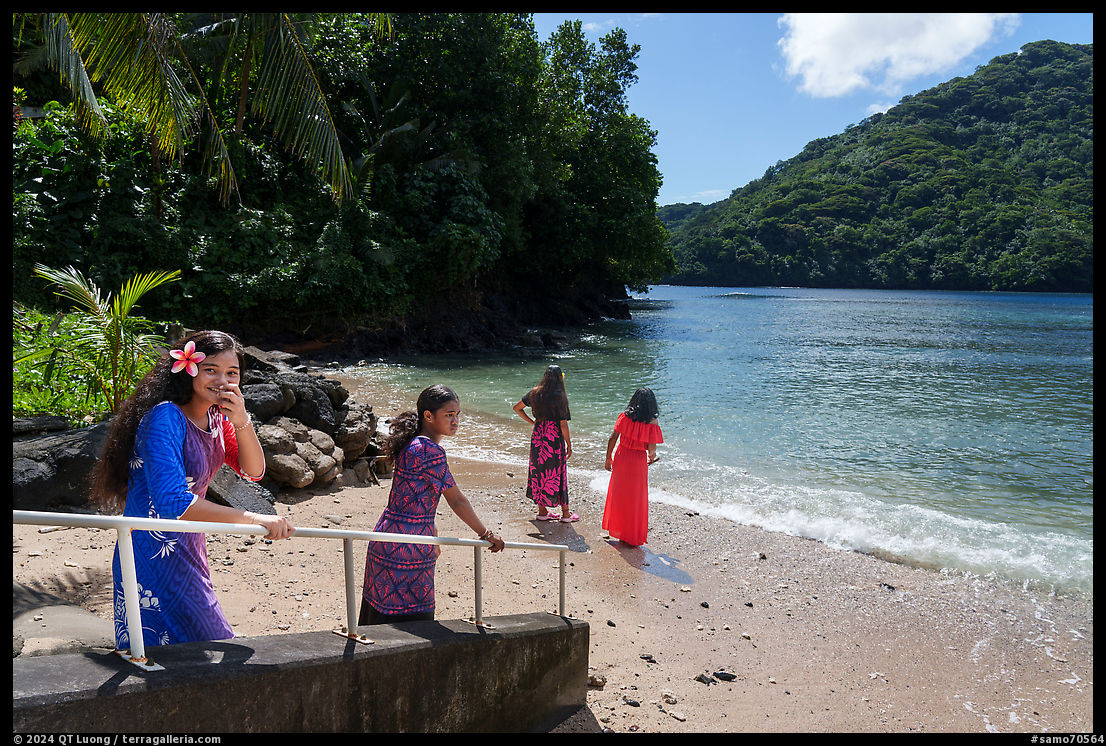
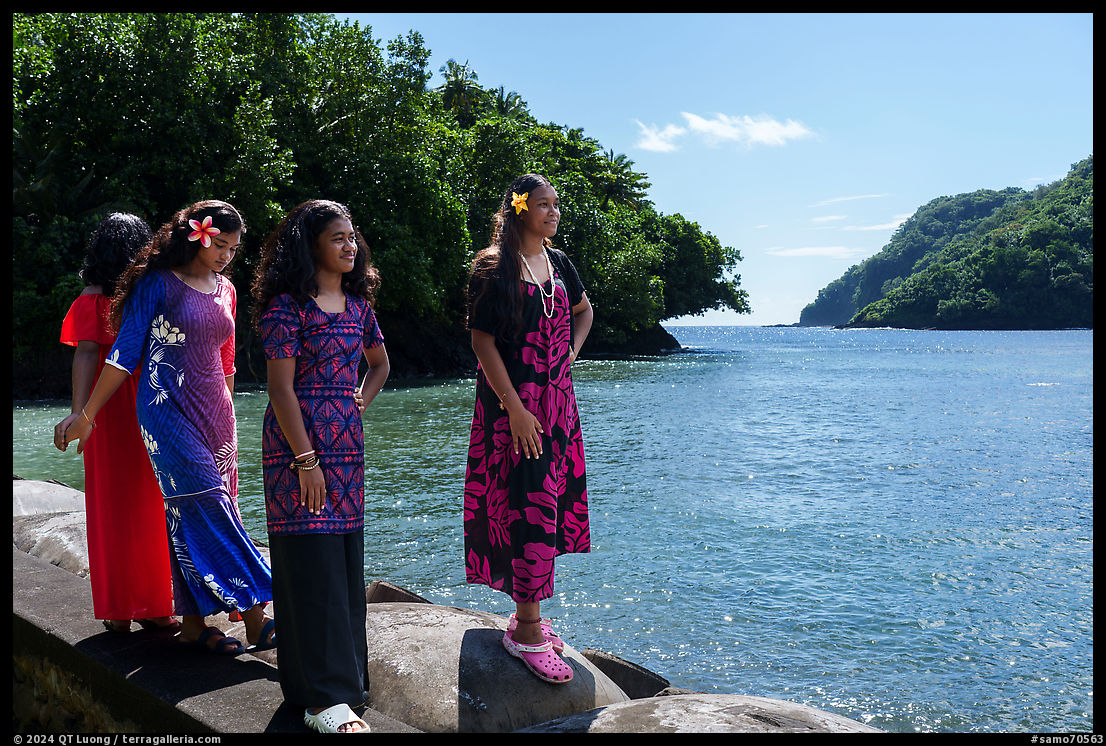
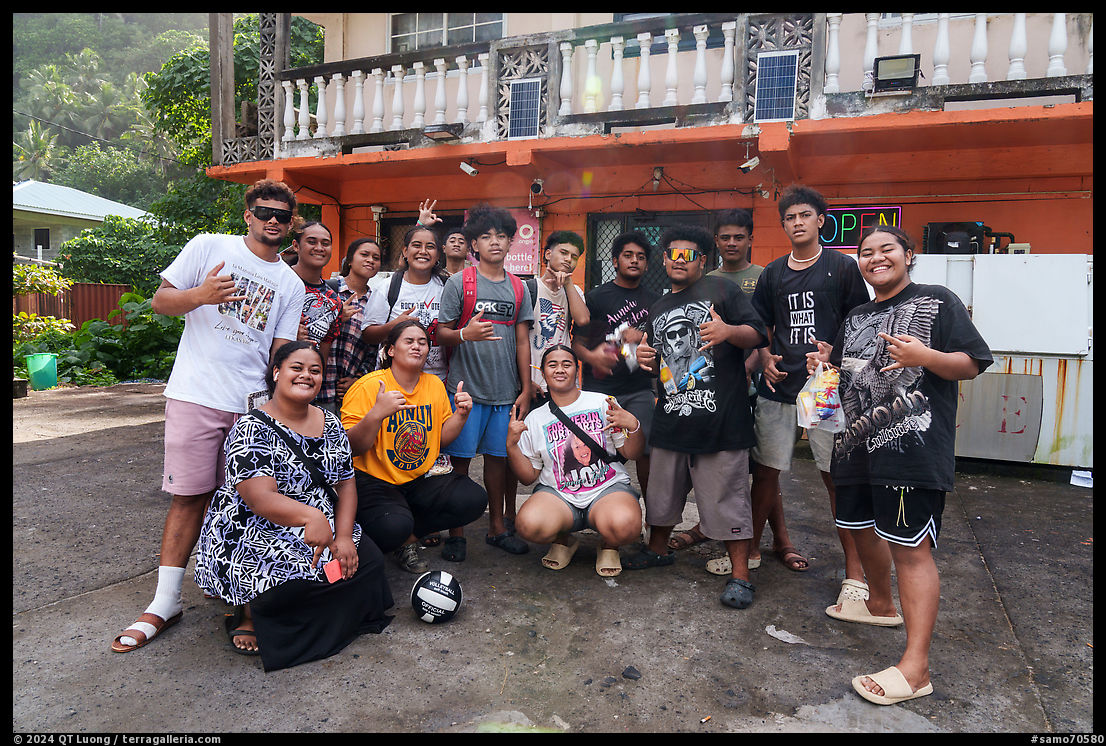
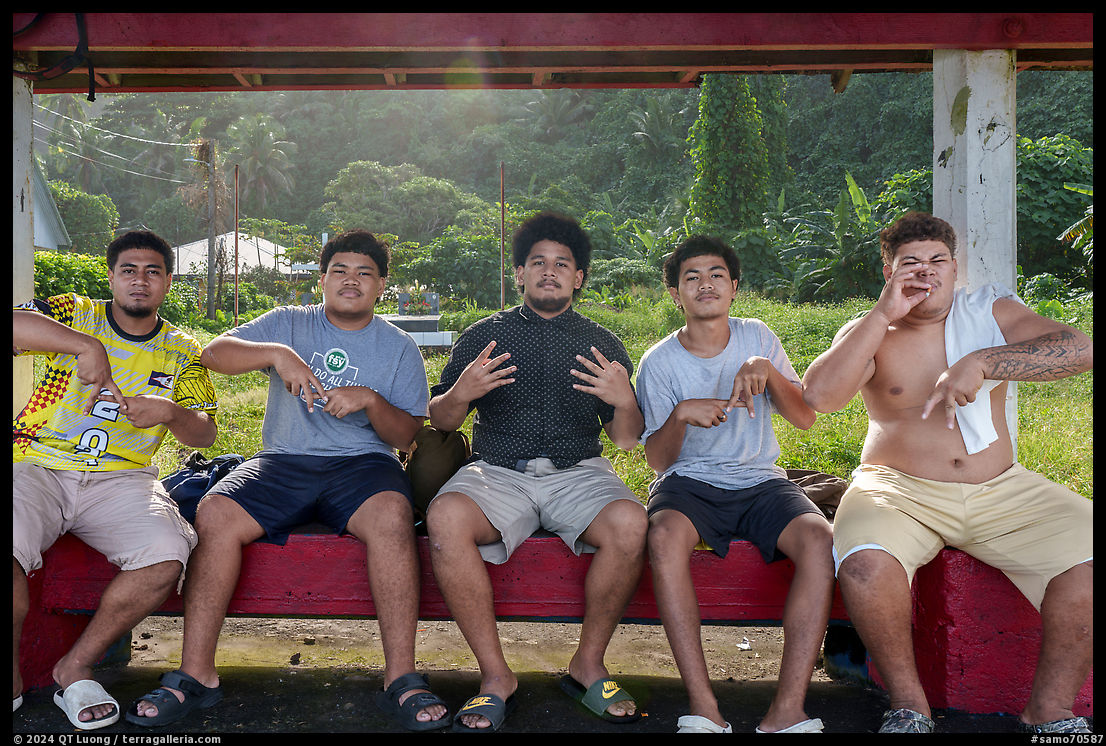
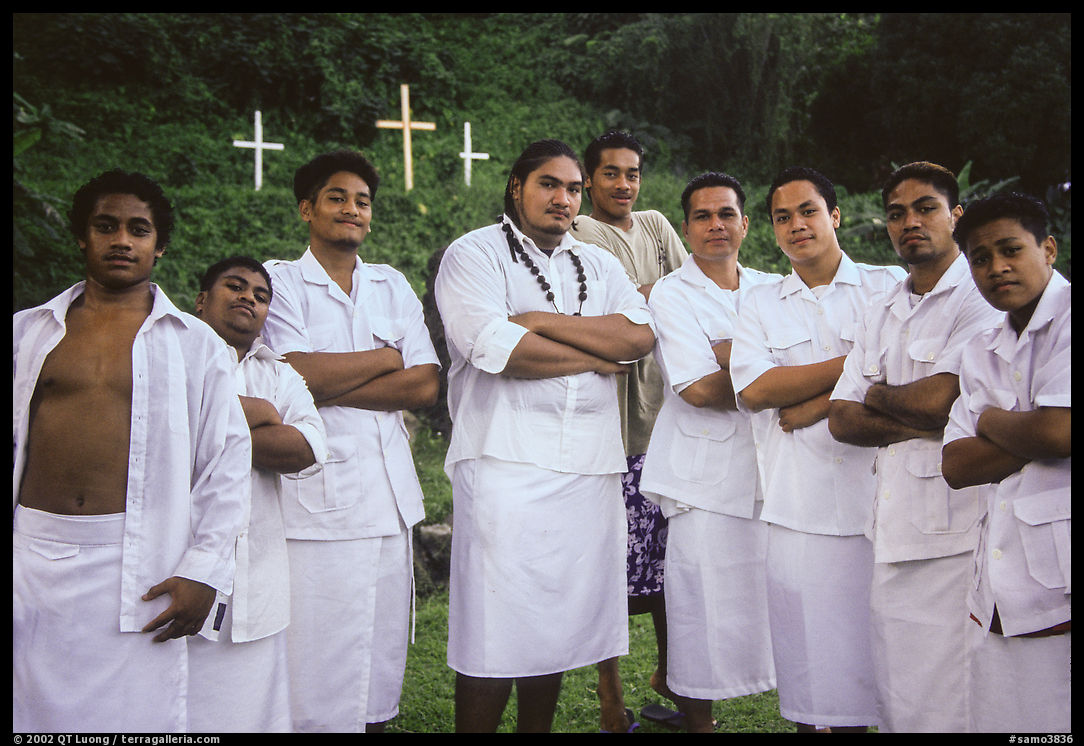
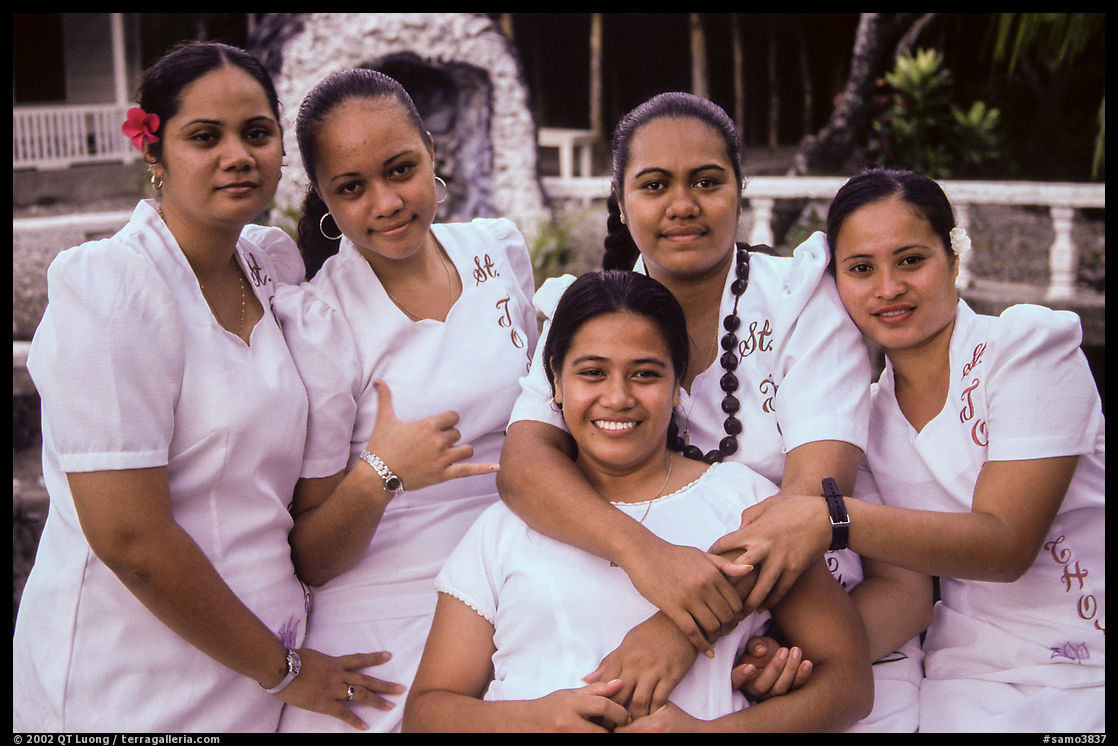
Church
The Christian religion, practiced by almost every Samoan, holds significant importance in Samoan life, deeply influencing the culture and daily routines of its people. Even the smallest villages feature a distinctive church, serving as the spiritual and social heart of the community. The Sunday Sabbath is rigorously respected, with most activities paused to honor the day of rest and worship. Samoans often wear white to church. The strict observance of the evening prayer time, known as Sa, is a daily ritual where families gather to practice their devout faith. Retired scuba diving tanks are often used as curfew bells. Villagers hit them with hammers at 6 in the evening to signal the start of prayer time.
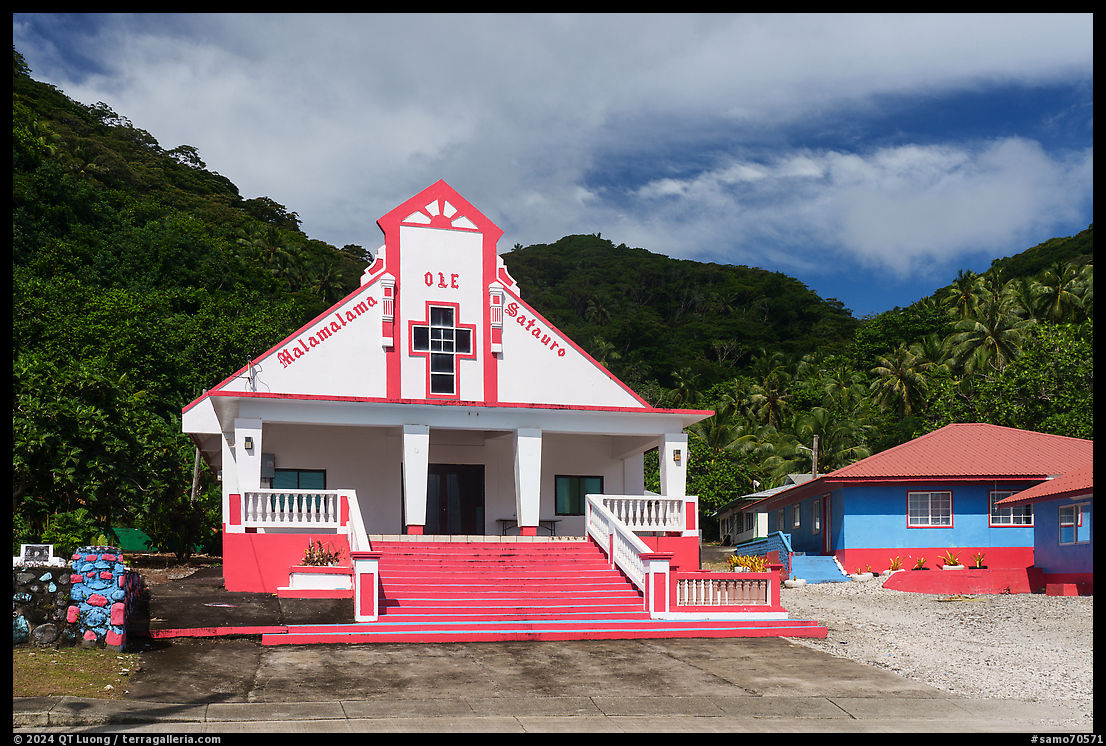
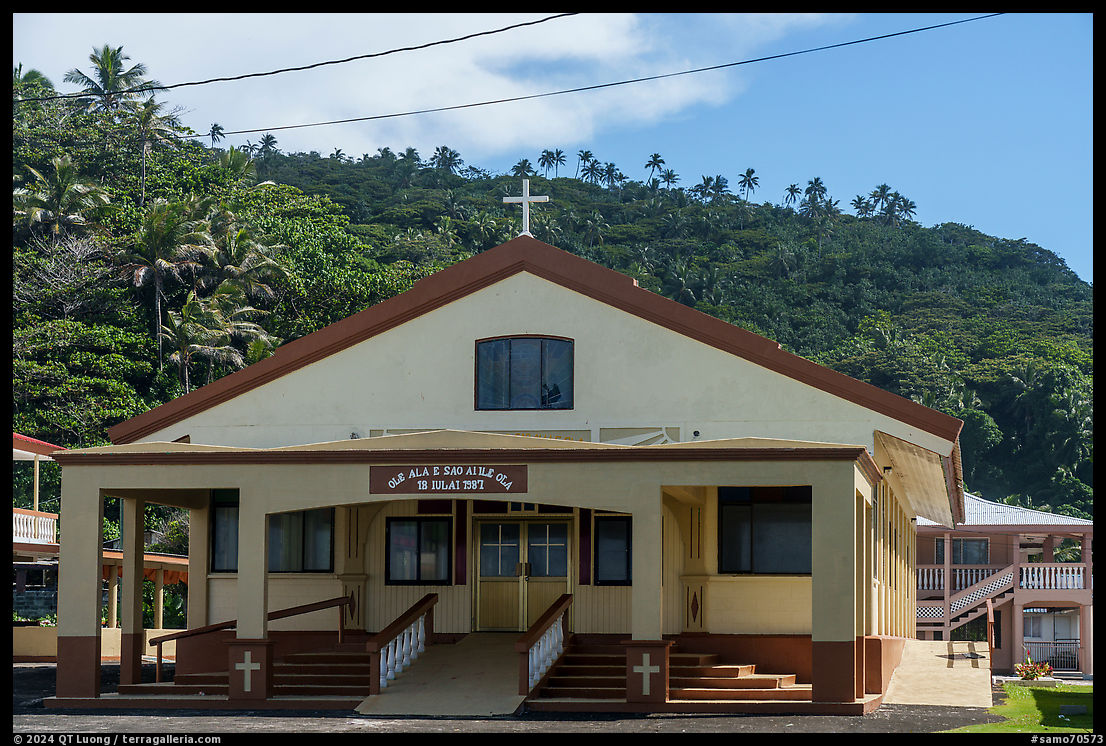
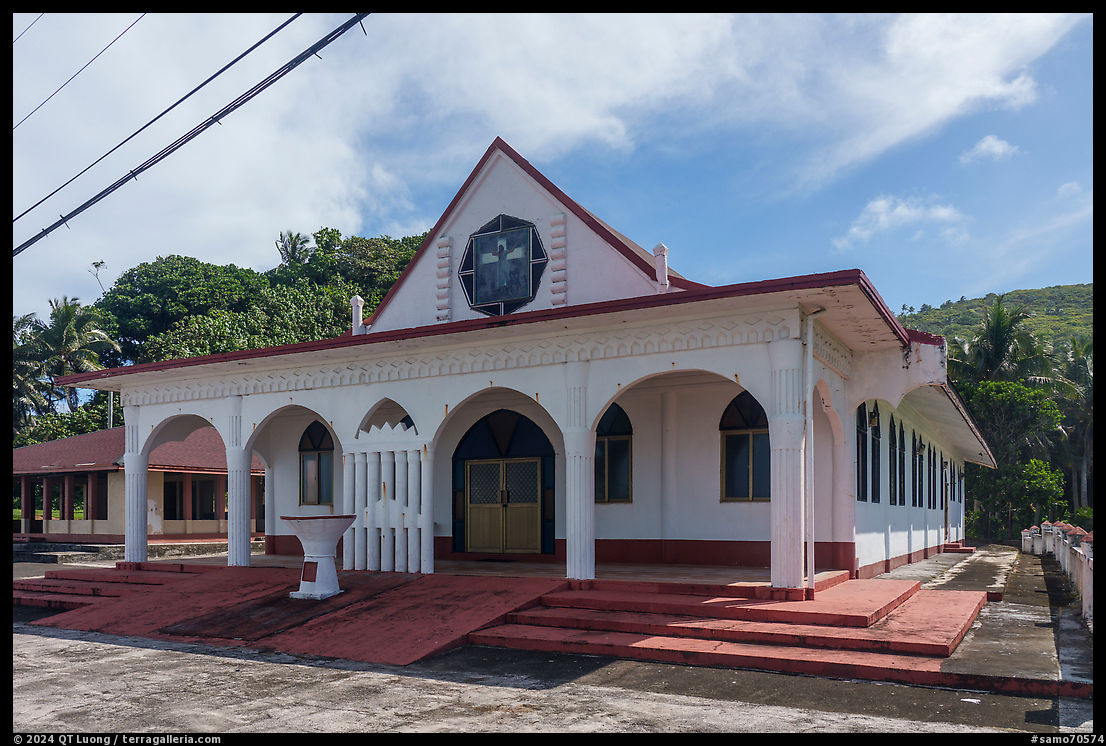
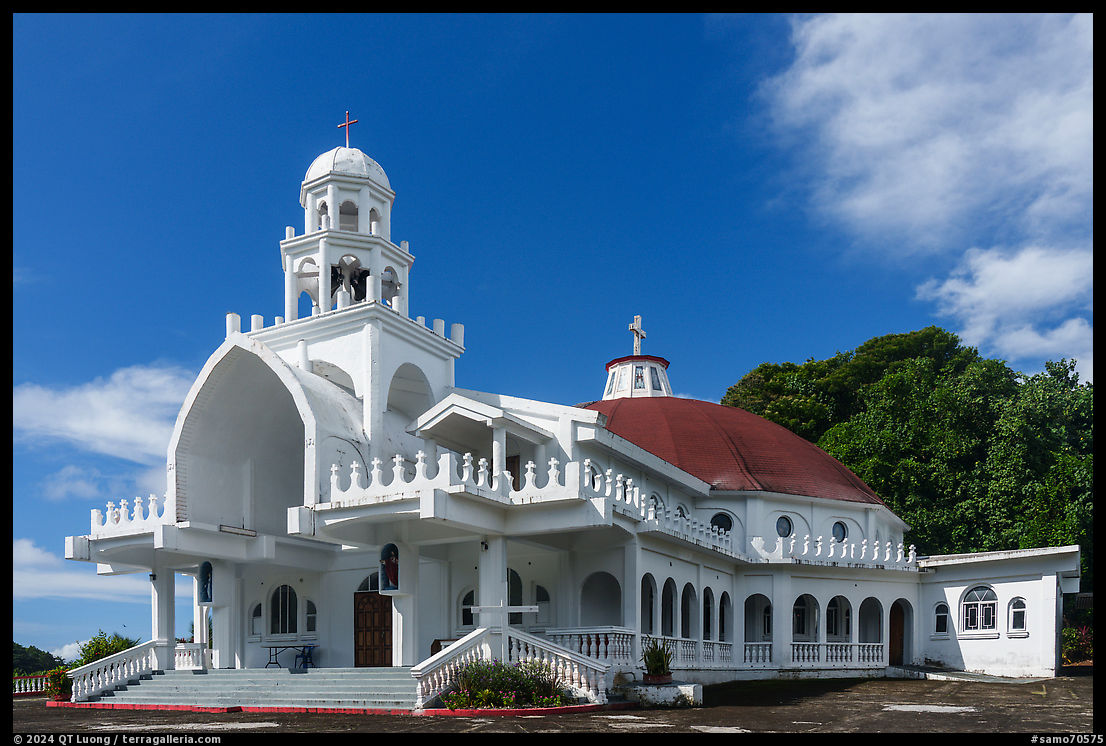
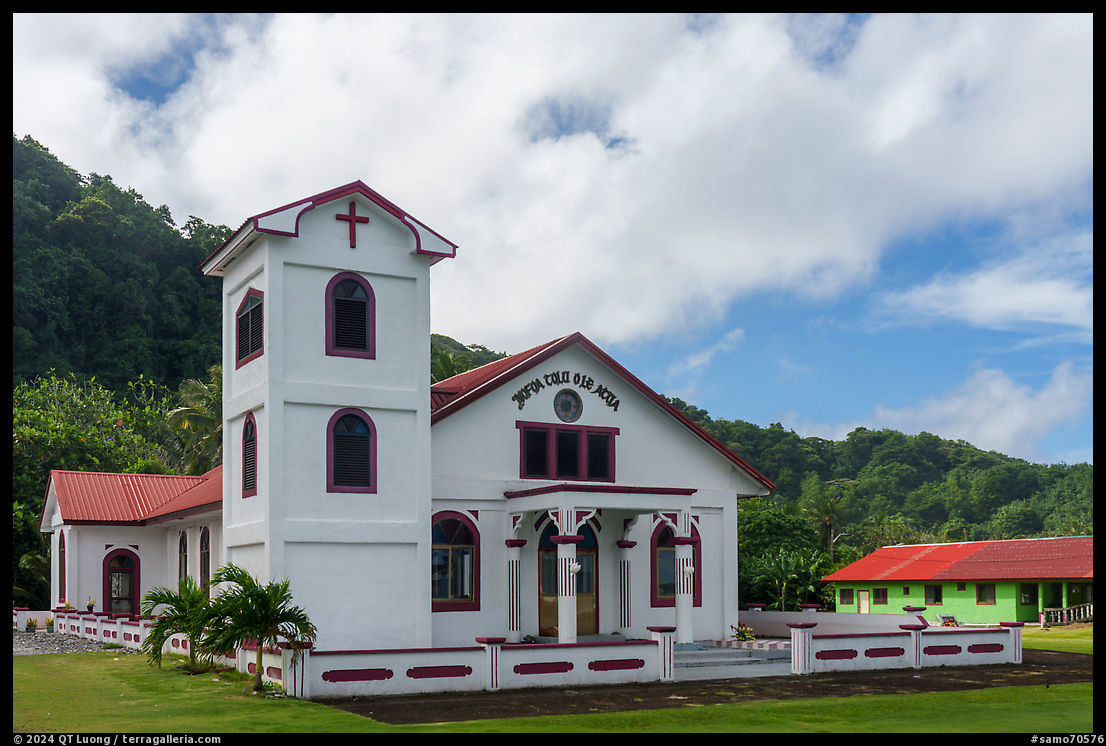
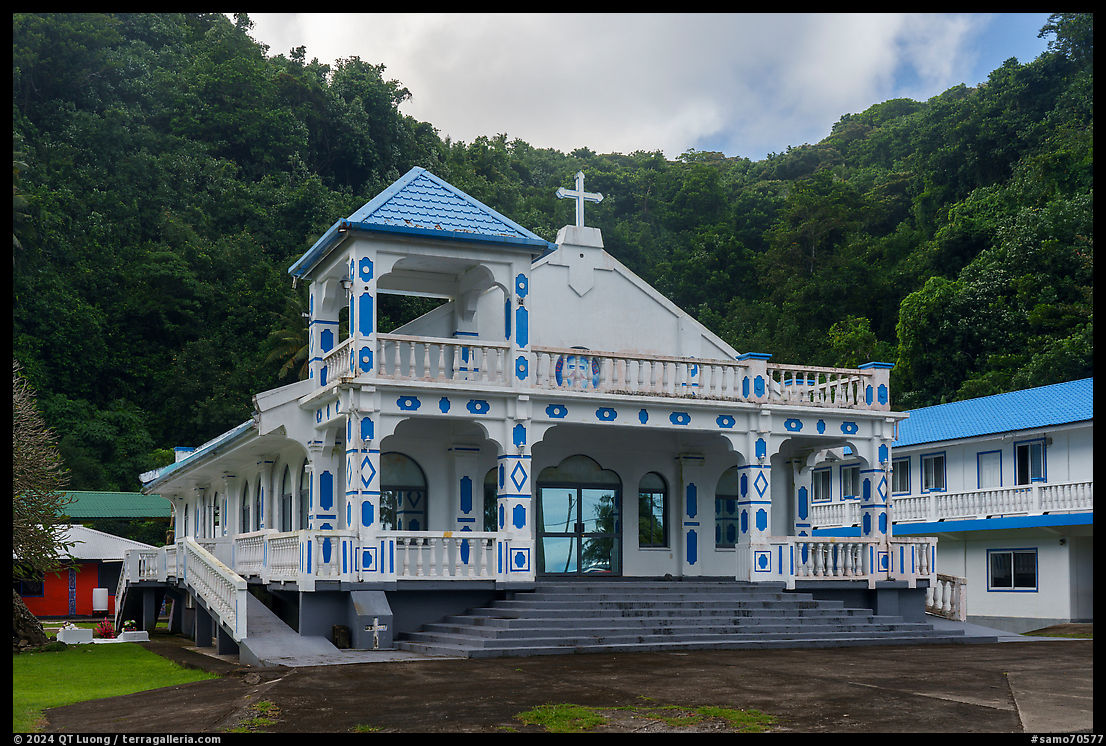
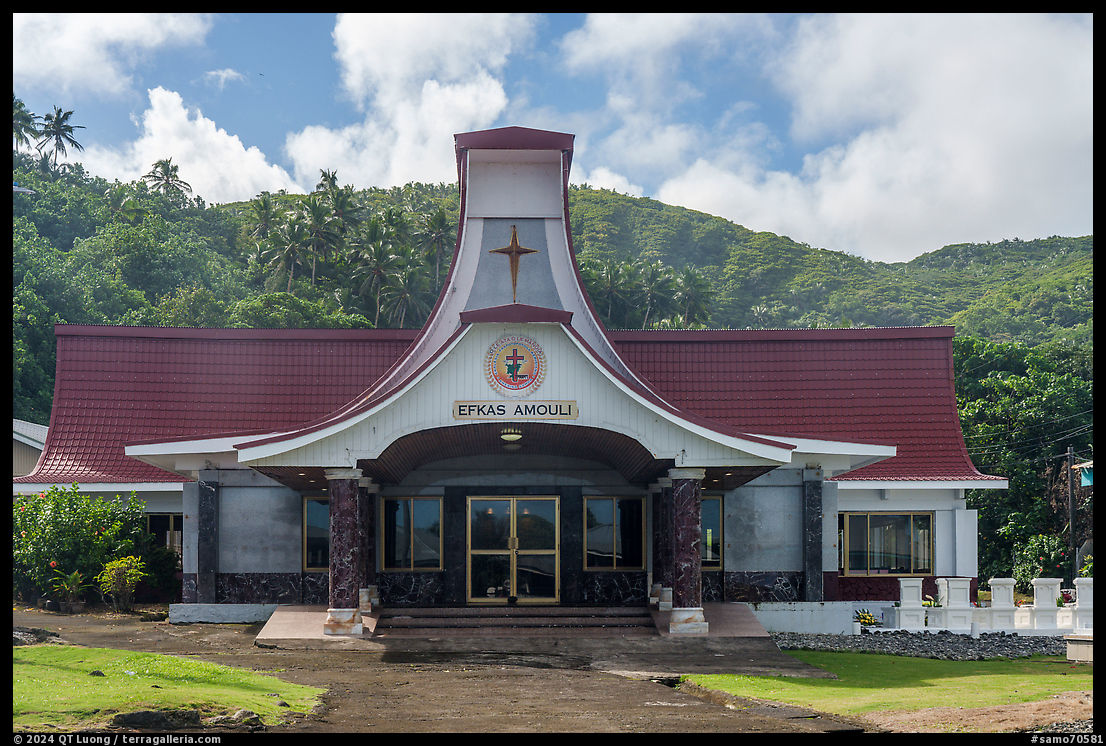
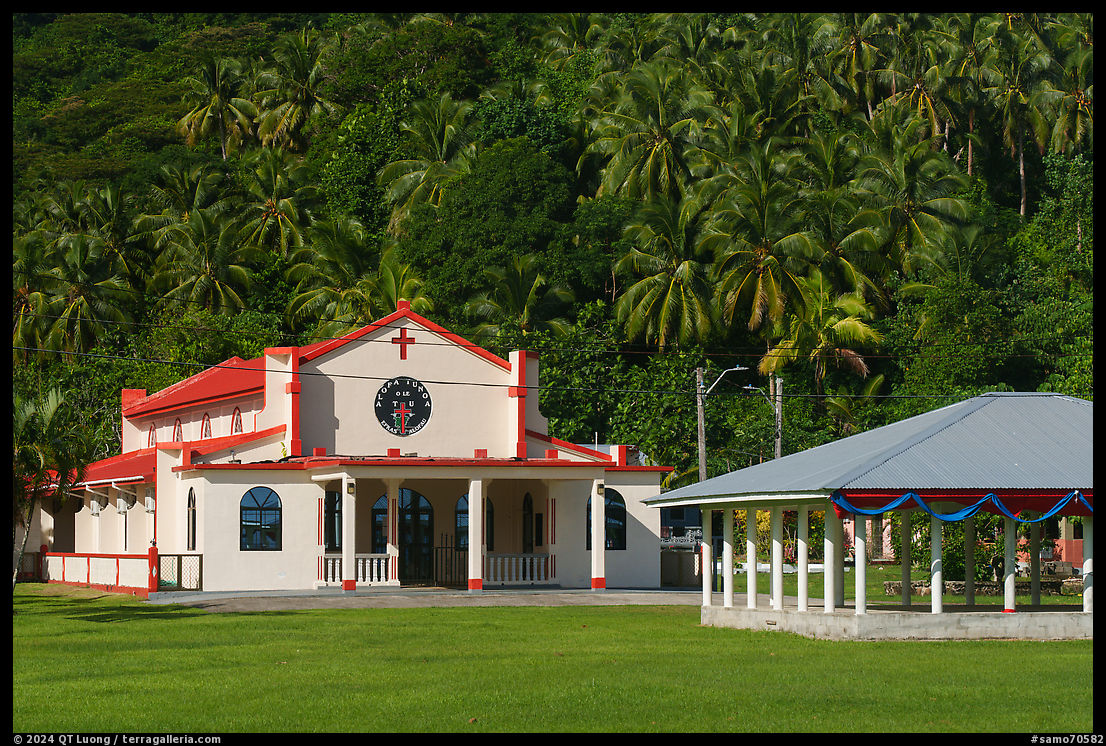
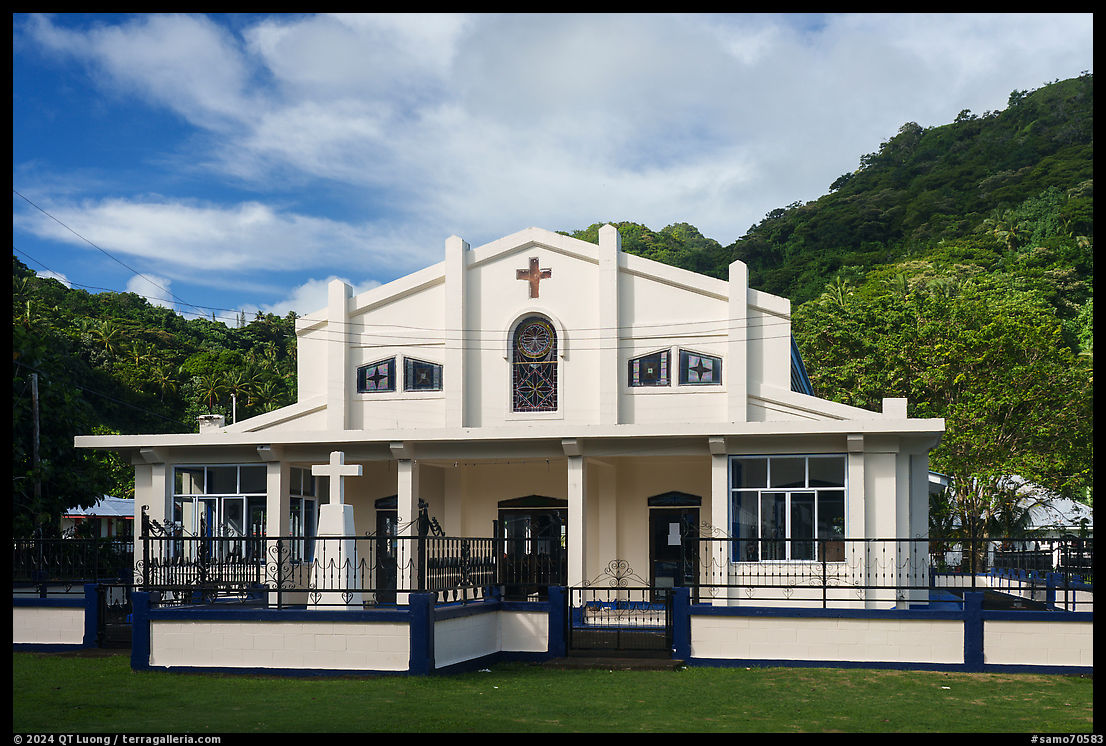
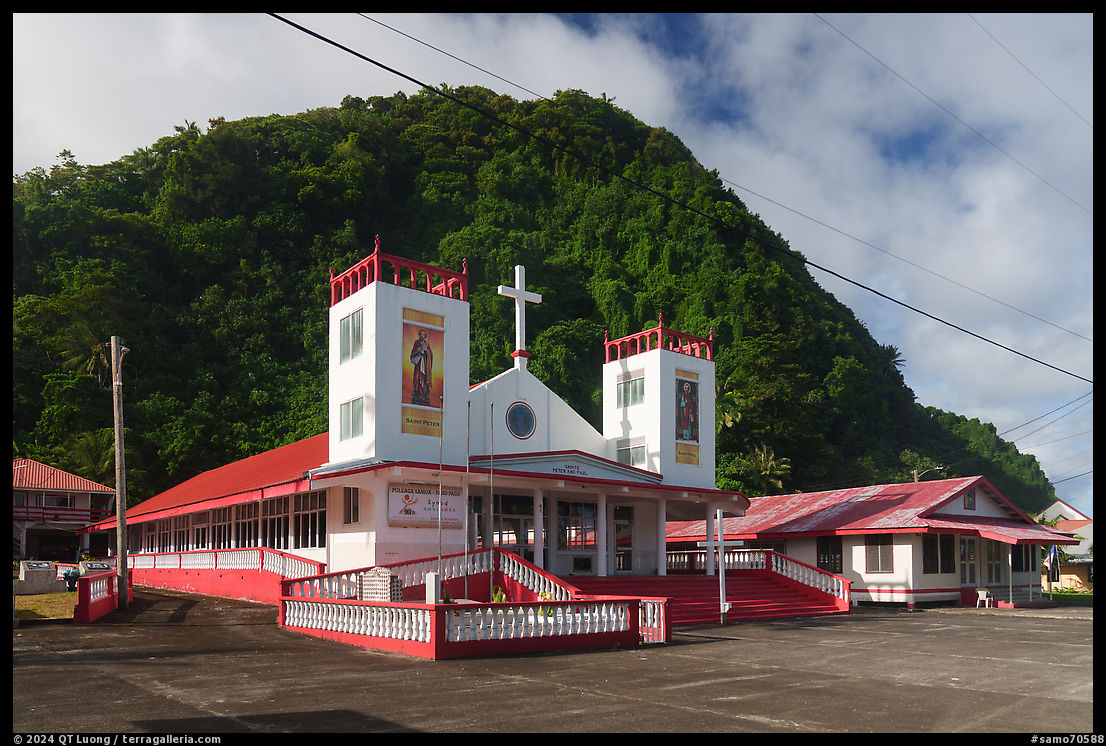
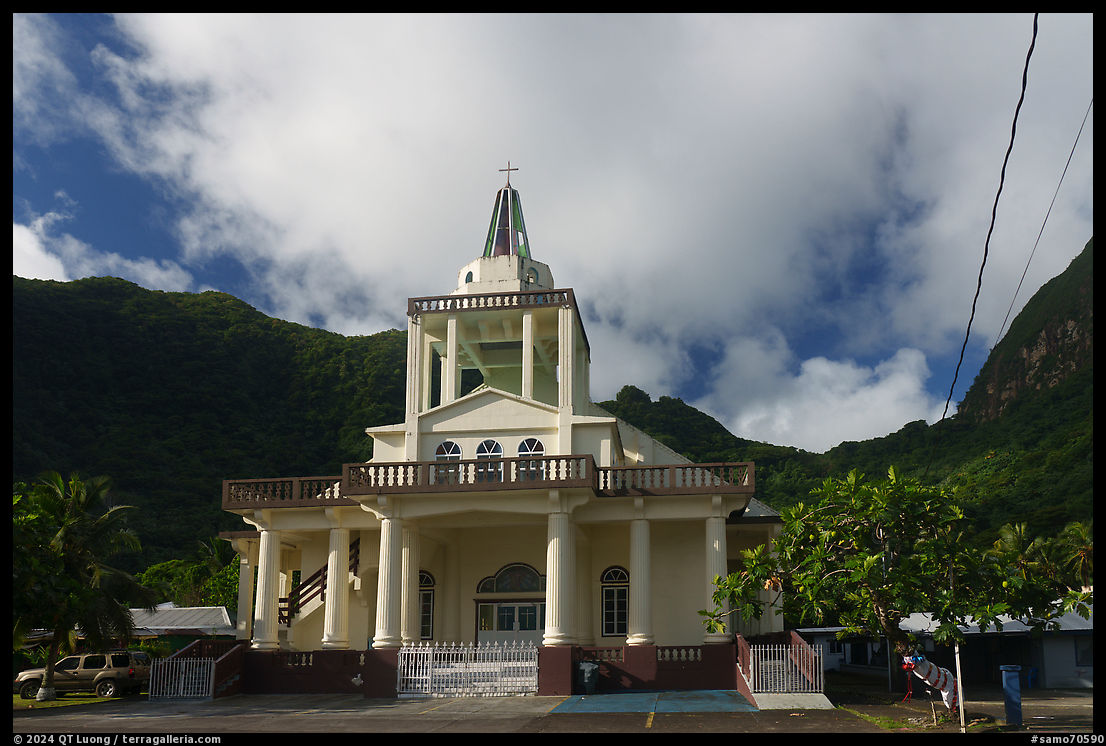
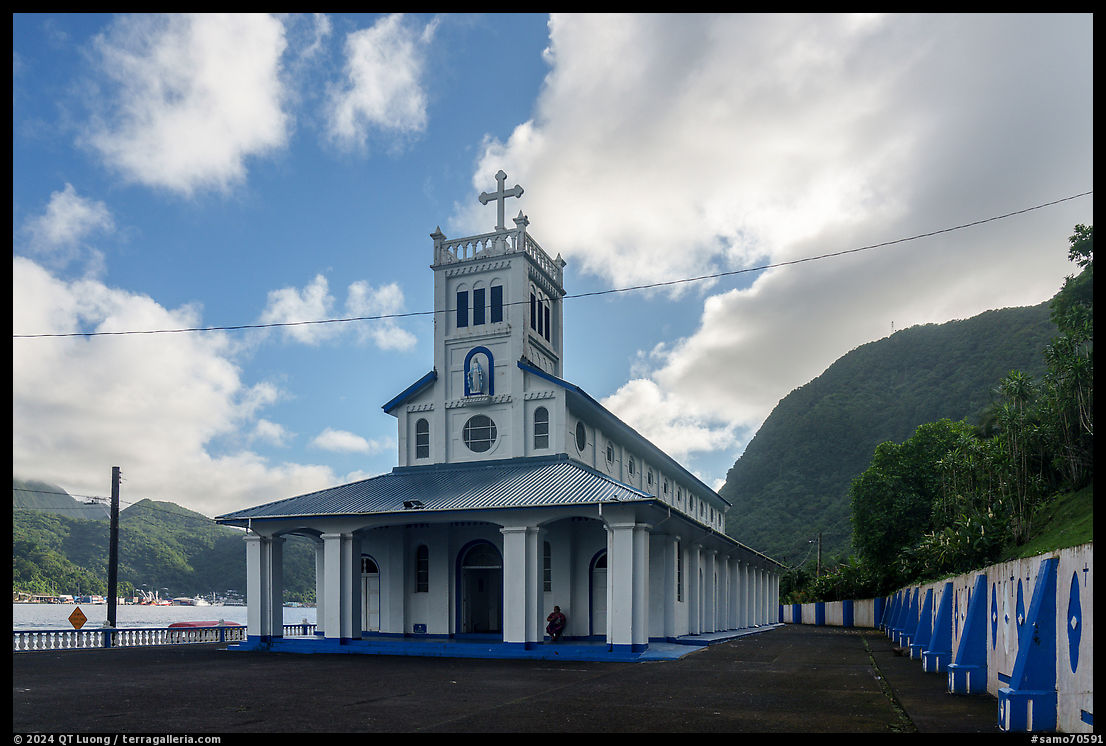
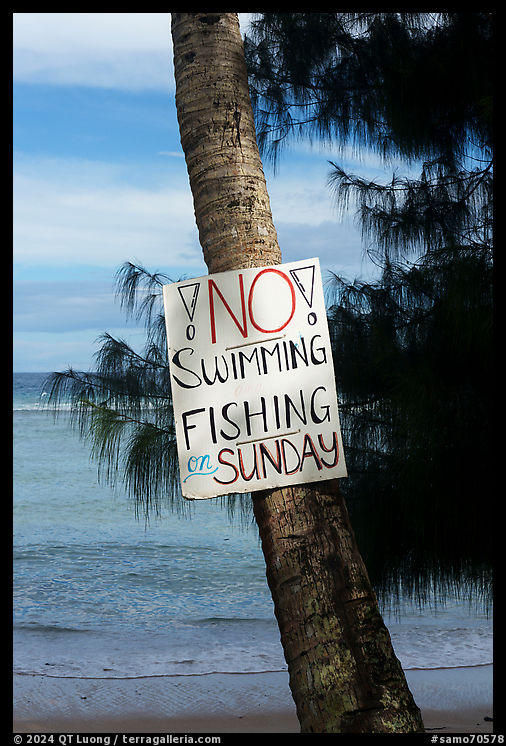
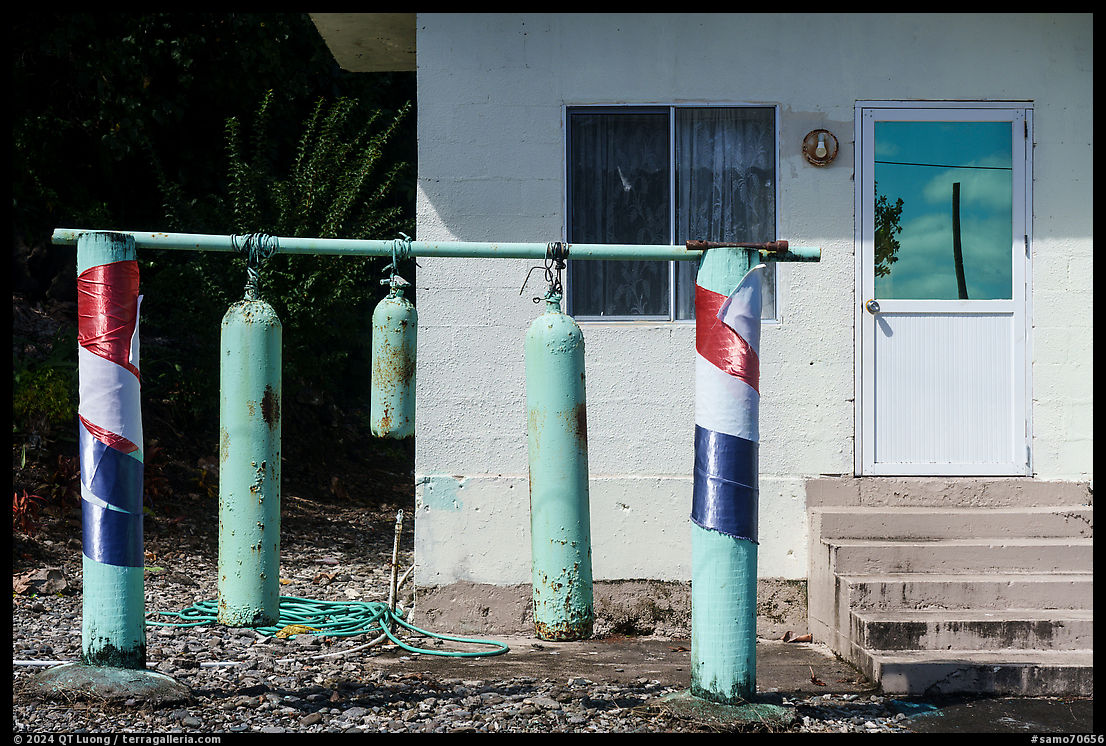
U.S. Territory
Throughout the 19th century, Western powers attempted to divide the Samoan Islands. In 1899, the US claimed the eastern islands, while Germany took the western ones. Flag Day commemorates the first raising of the American flag over American Samoa on April 17, 1900. With its new status, American Samoa adopted the U.S. flag. On Flag Day in 1960, the American Samoan flag, featuring both US and Samoan influences, became official. The red, white, and blue colors reflect US symbols. Today, American Samoans are U.S. nationals but not citizens, with some fearing that citizenship could disrupt their traditions.

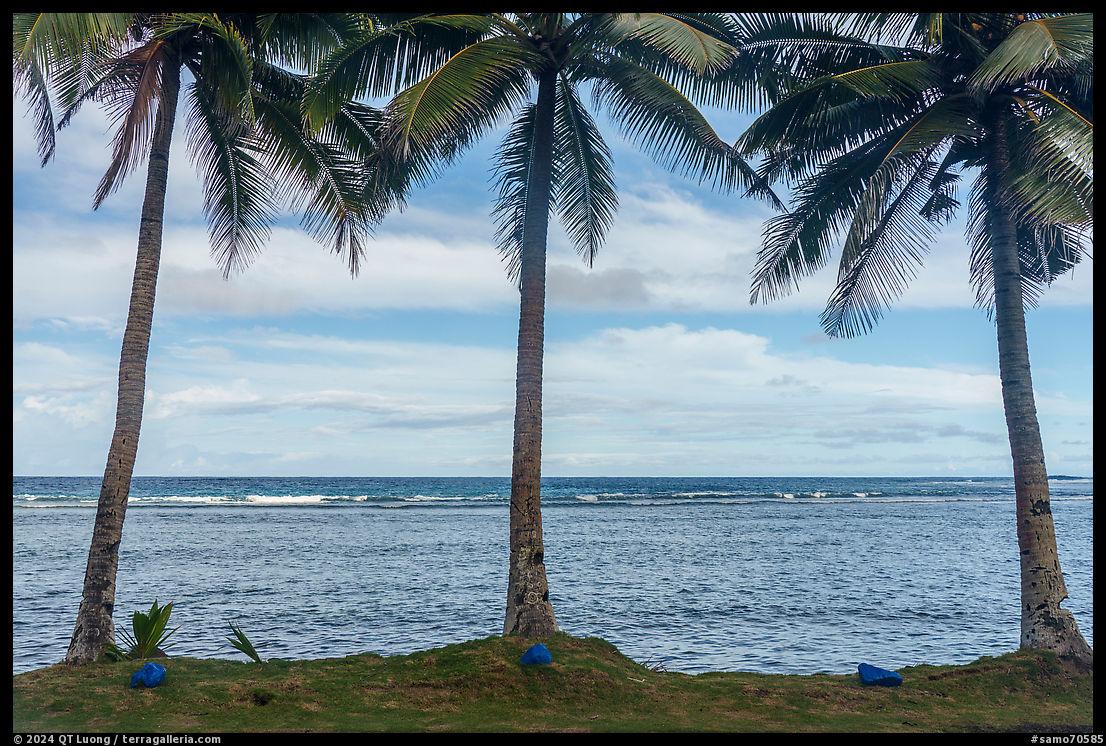
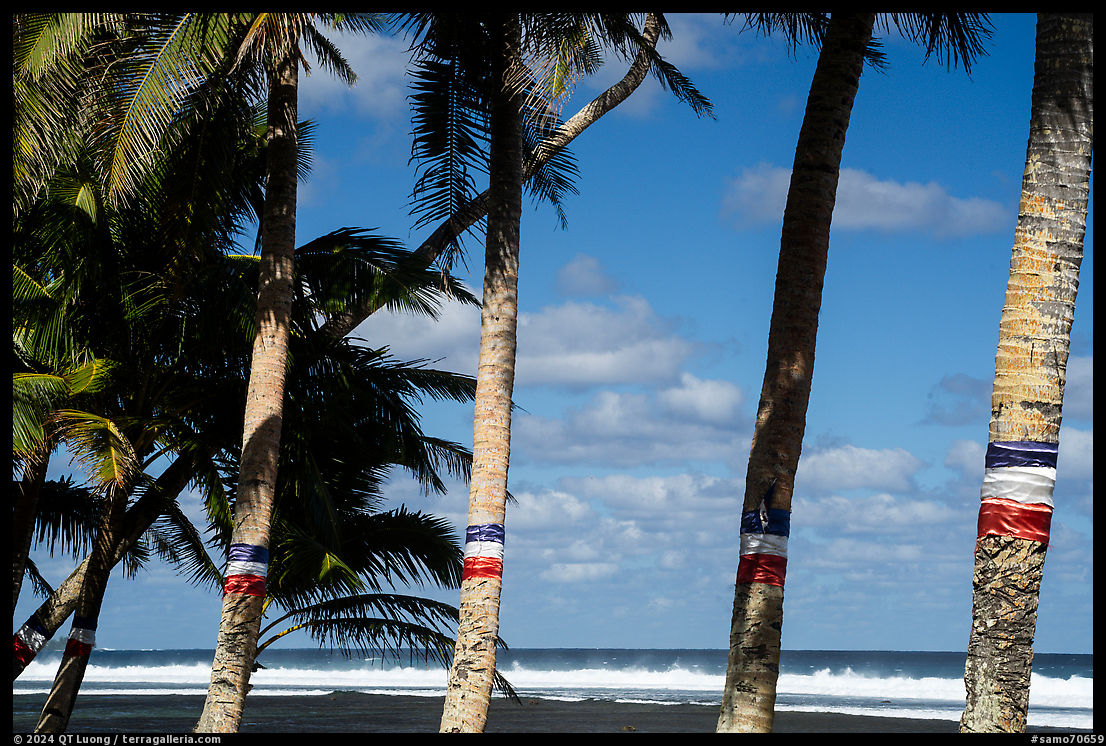
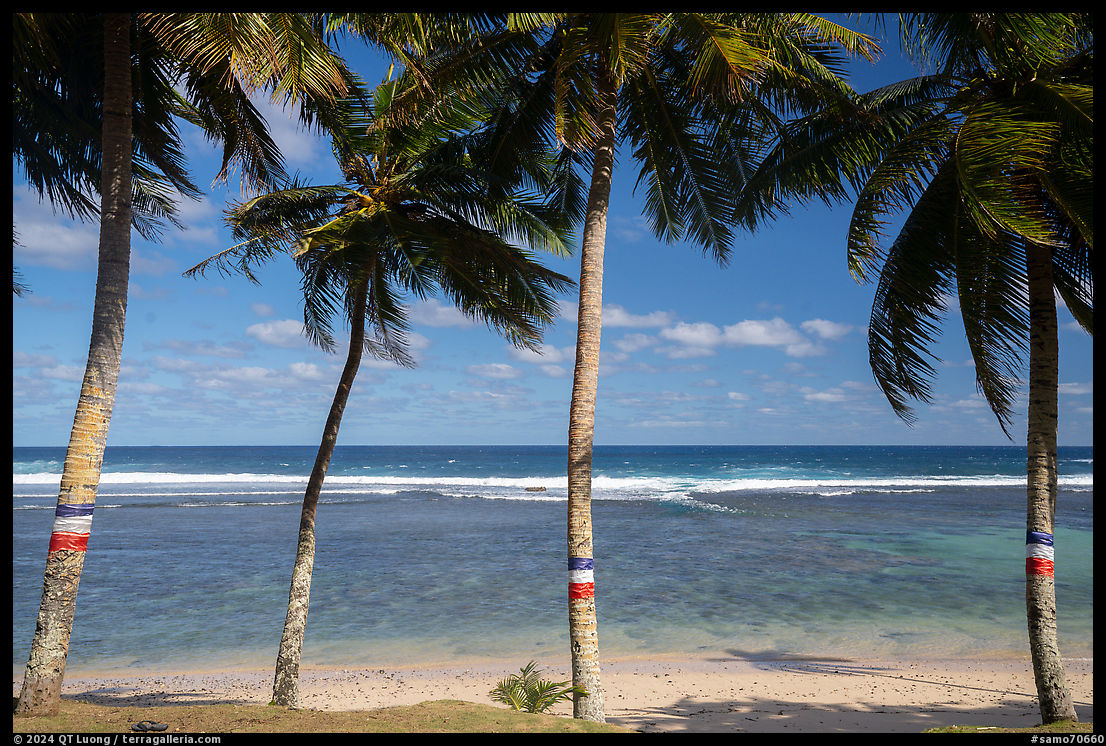
Siapo
Siapo is a Samoan art made traditionally made from the inner bark of the paper mulberry tree. The bark is processed, beaten, and decorated with intricate patterns depicting natural elements like shells, fish, and leaves. Used in clothing, gifts, and wall hangings, siapo is created through a meticulous, multi-stage process passed down through generations. In 2002, a young Samoan man gave me a siapo as a gift after I observed him drawing it on wood and I returned the favor by sending him a print. Twenty-two years later, I posed at the National Park of American Samoa Visitor Center in front of an eight-foot by eight-foot Siapo Mamanu, the largest of its kind since 2000, created in collaboration with the American Samoa Community College Art Department on the occasion of the National Park Service Centennial.
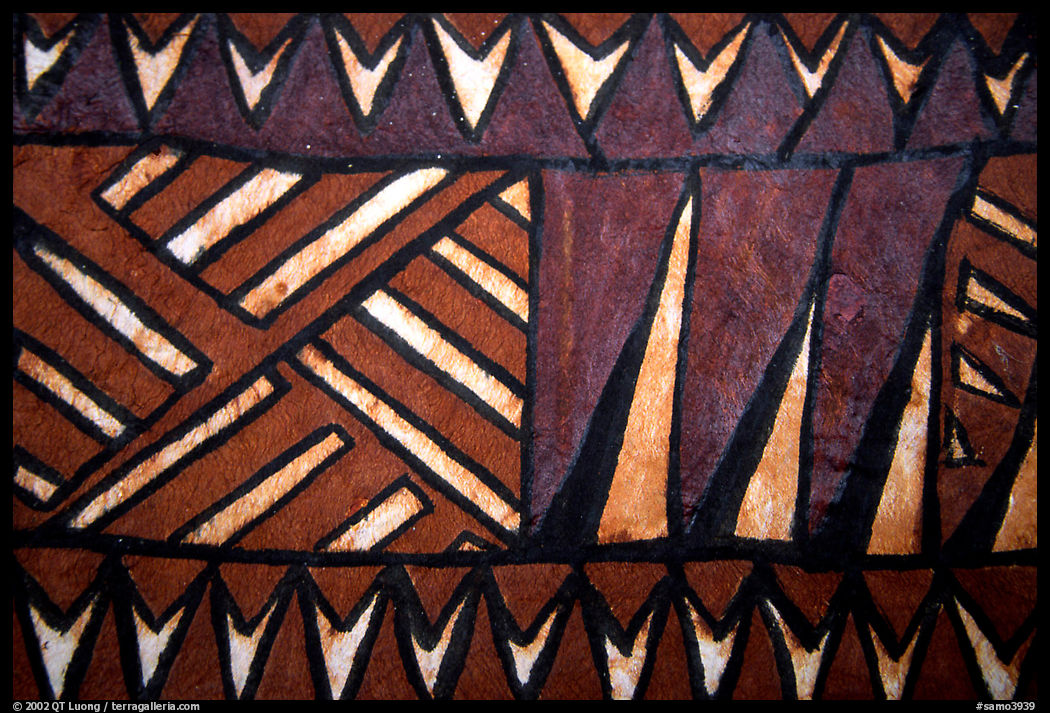
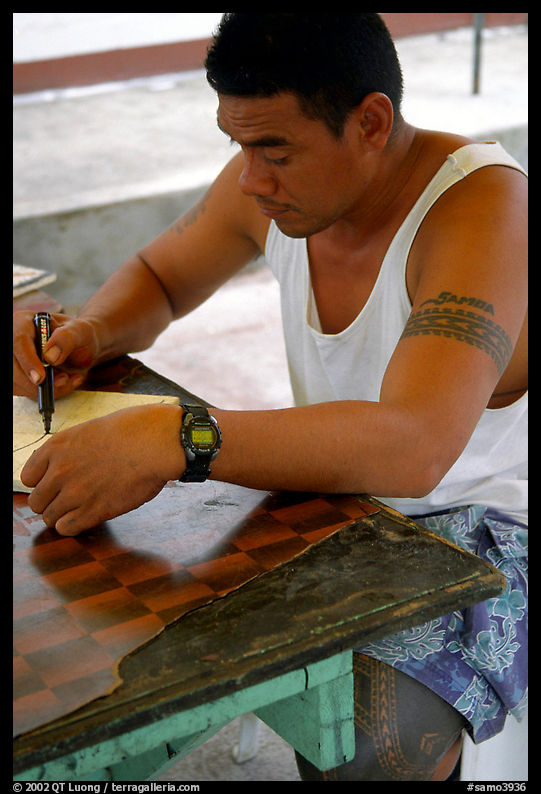
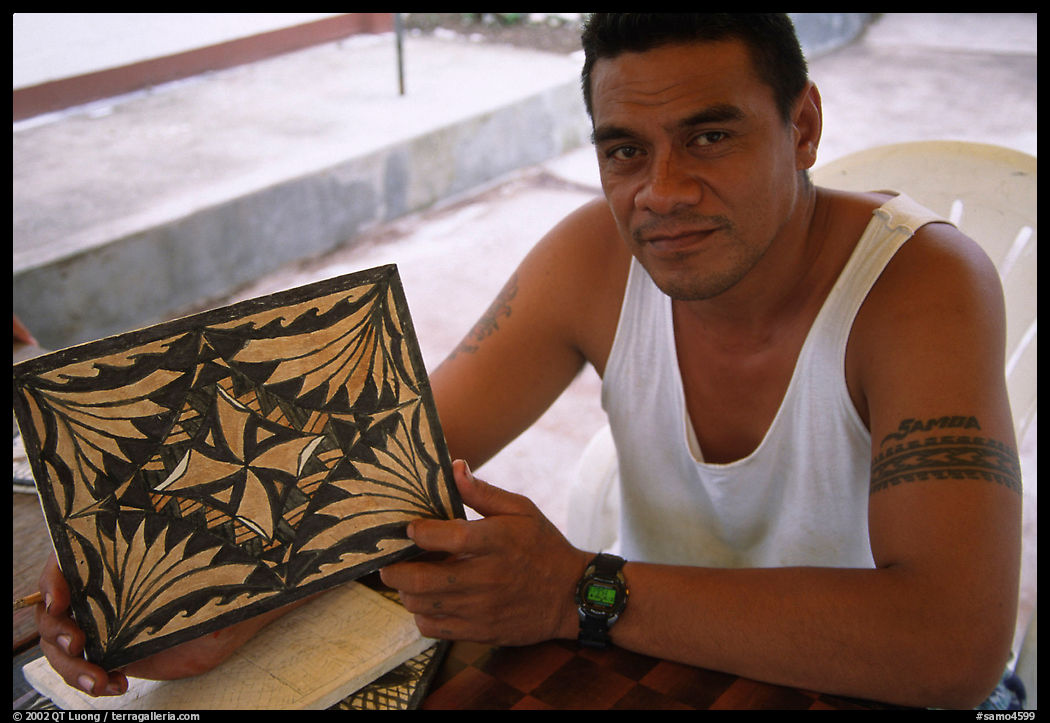
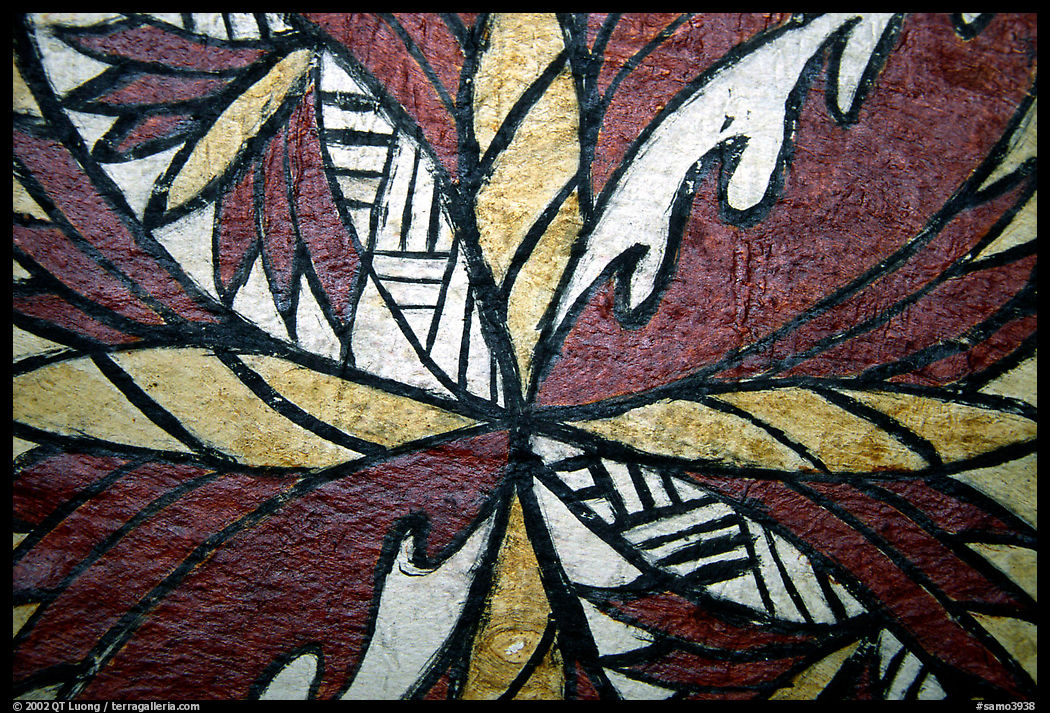
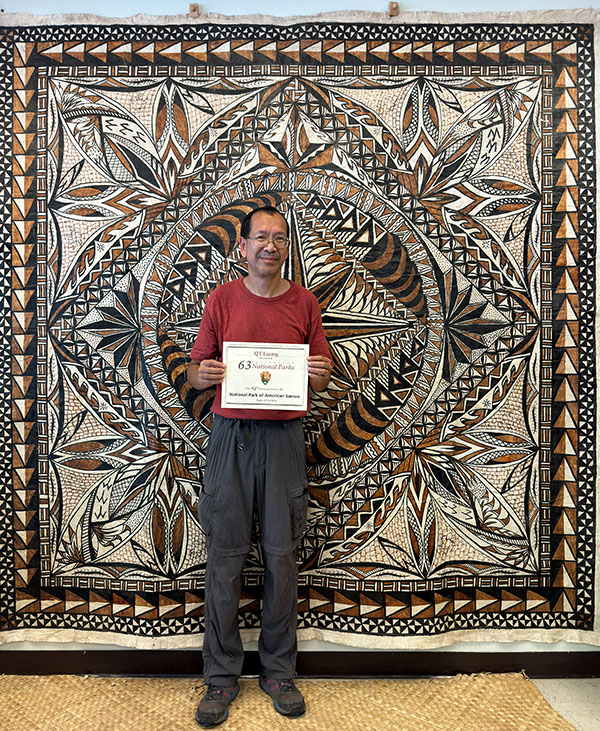
Feast
Tisa’s Barefoot Bar weekly serves a traditional Samoan feast, prepared using an earth oven known as an umu. The preparation is a time-honored process. Early in the day, a patch of earth is lined with a sheet of metal, superheated stones, and banana leaves so that the food doesn’t touch the rocks. The food, which typically includes a variety of meats, seafood, and root vegetables, is then placed in the umu, sealed with layers of banana leaves, and left to cook slowly for several hours. This method infuses the dishes with a smoky flavor and tender texture, offering an authentic taste of Samoan cuisine. As a vegetarian, I was at first wary that I would only be served papaya and taro with a coconut and leaf garnish, but the food turned out surprisingly tasty and filling. The feast at Tisa’s Barefoot Bar, eaten without utensils, is not just a meal but a cultural experience, bringing people together to celebrate Samoan traditions and hospitality.
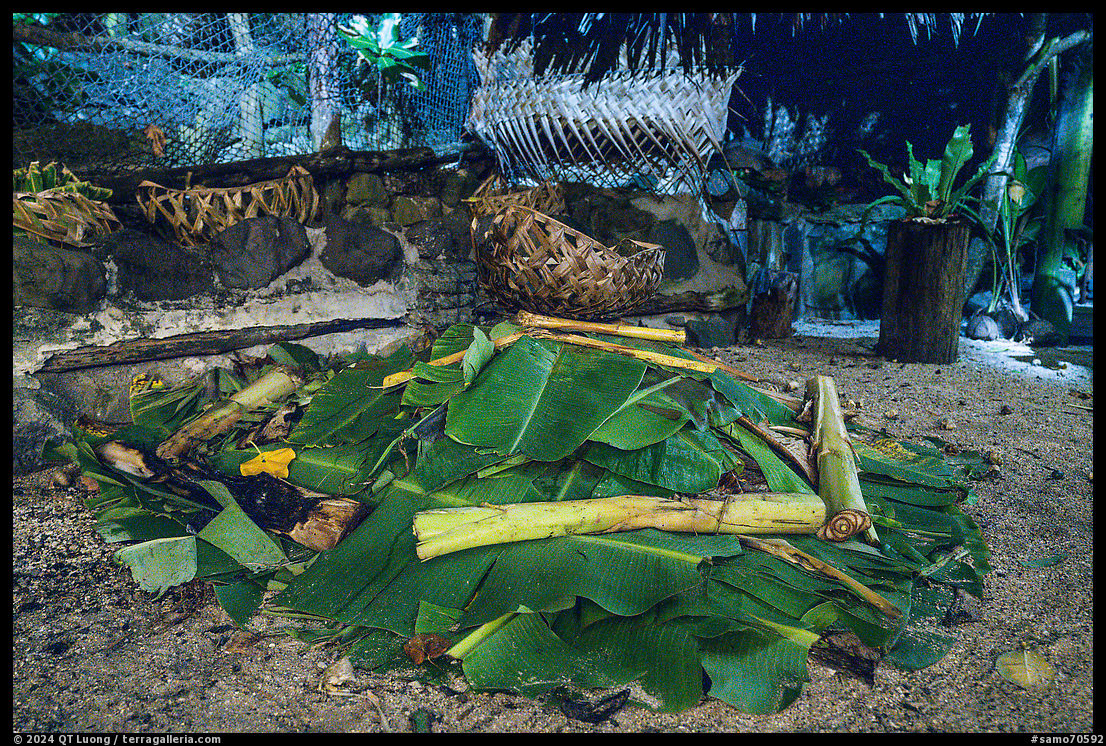
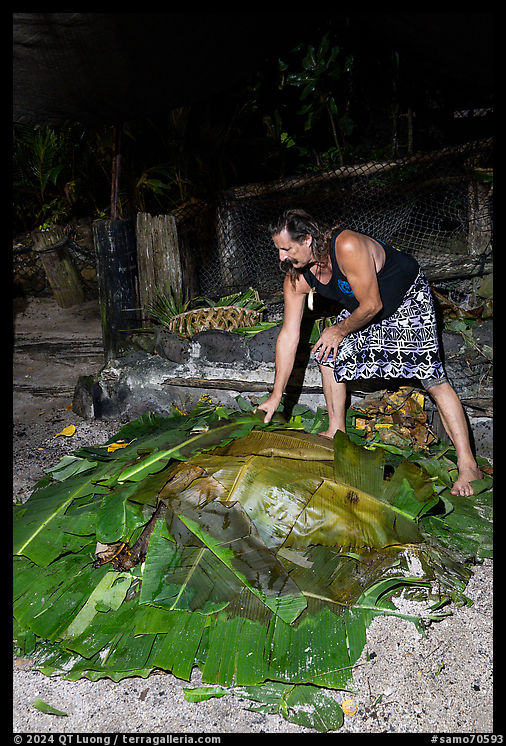
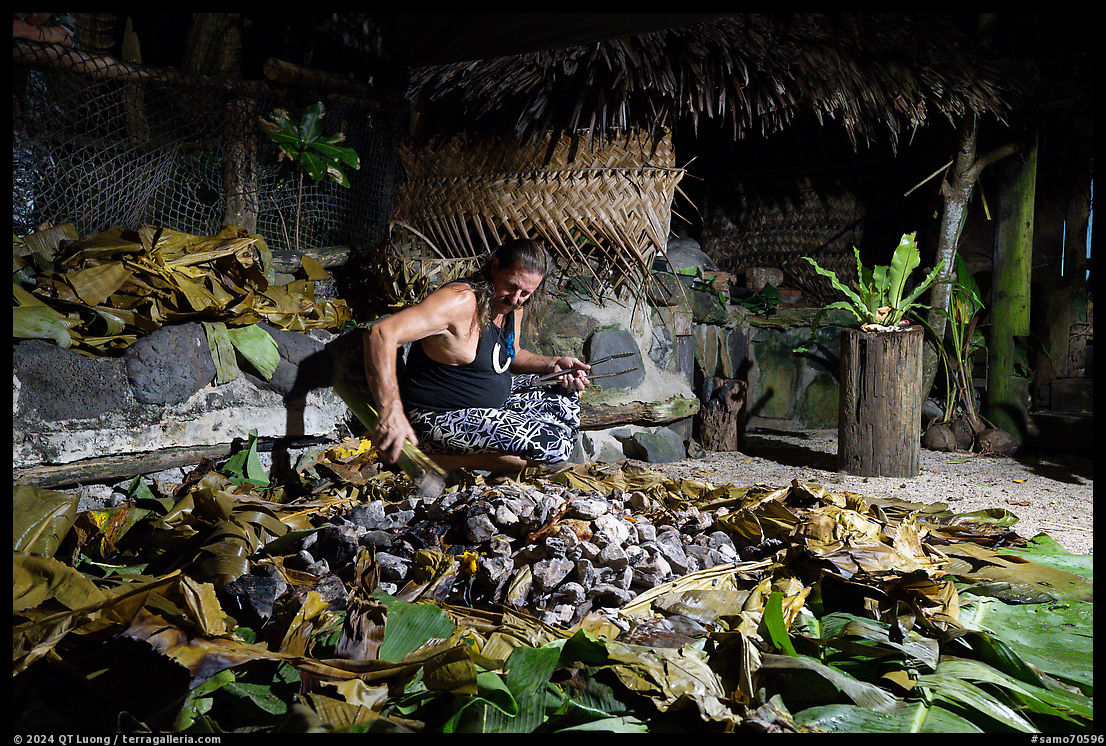
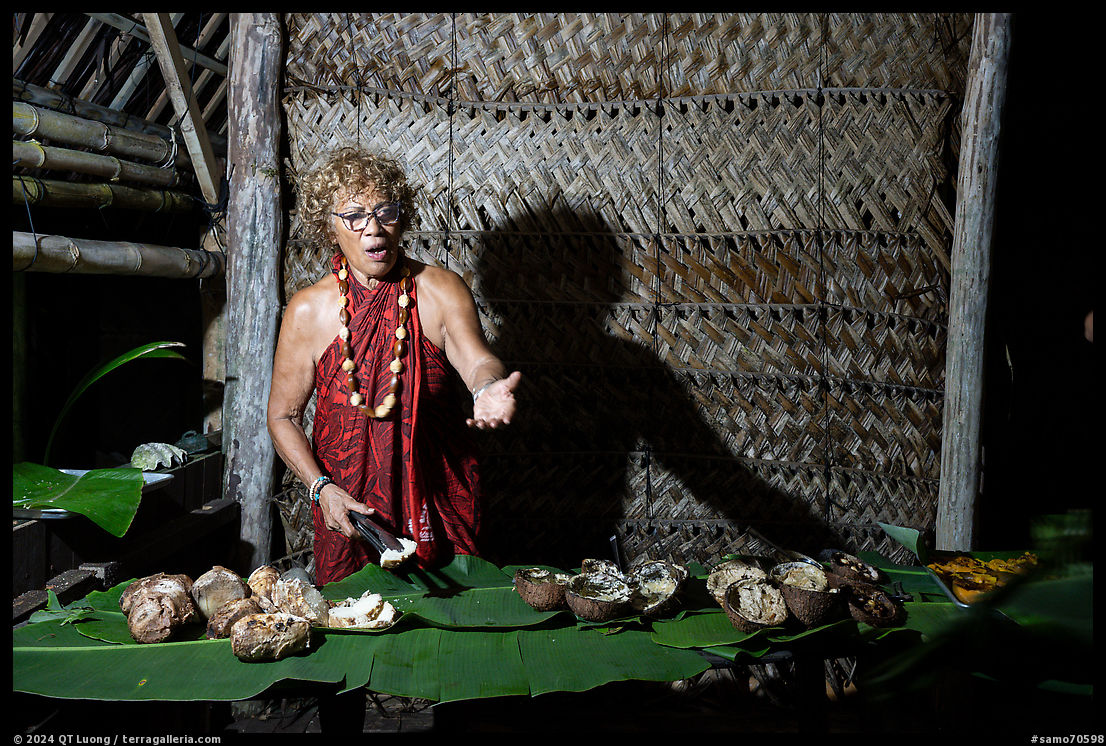
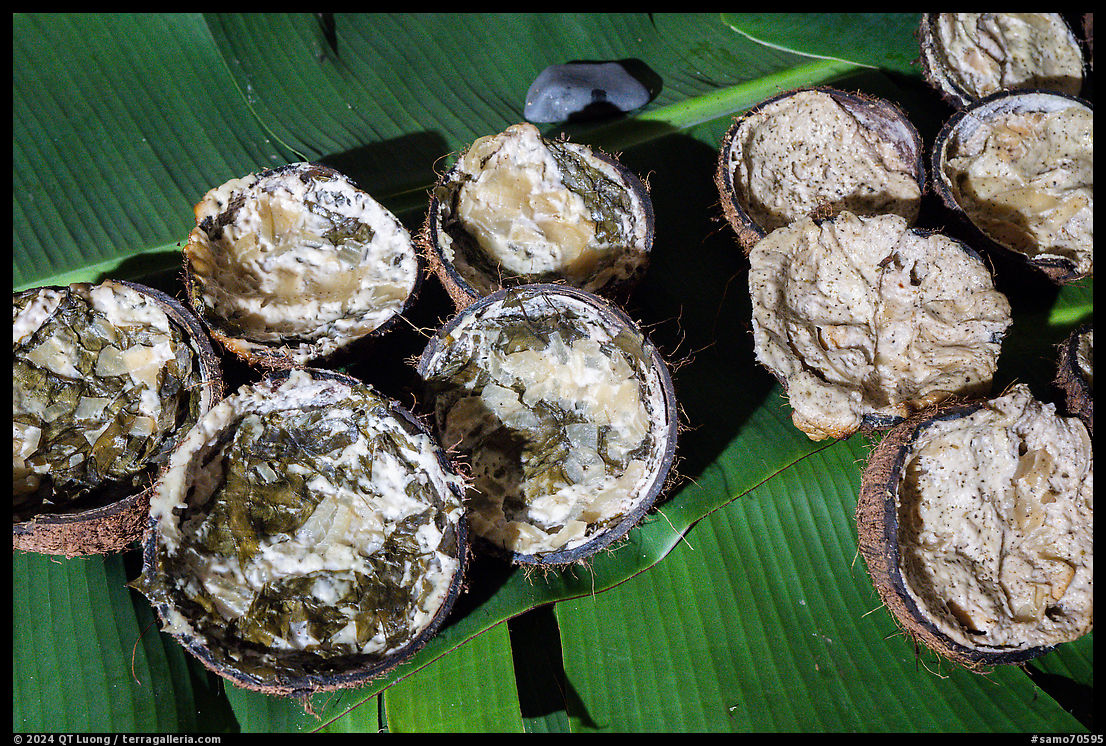
Part 4 of 5: 1 | 2 | 3 | 4 | 5


This is fabulous! A mini-vacation for the middle of a busy day! Many thanks!
Thank you for the great pics and history of American Samoa. I did not know about the German part of Samoa, so I learned something new today. 🙂